Coleman Collieries plant (part 1)…going…going…
I’ve been holding off writing this article for well over a month. I just wasn’t ready, I was not prepared. Thinking about the subject made me upset and writing about it would only make things worse. They did it and I’m set aback. What were they thinking? Why did it happen? Does anybody care? For the love of God how can I write a report on it without feeling angry and disappointed at what they’ve done. I’m only a paragraph in and I have a giant pit in my stomach.
Let me explain…
The subject of this report was to be the Coleman Collieries plant and mine in Coleman Alberta, in what is our favourite part of the province, the Crowsnest Pass. There is so much coal mining history in the area and this complex is an very important part of that. For this report, a two parter, will still get to explore this fascinating operation. Except for one building…the place where the coal was cleaned, sorted and loaded onto trains, aka the loadout – that massive blue structure – the heart of the operation, a local landmark, an industrial treasure, what could have been the centrepiece for an historic site. The bastards tore it down…
From what we can see no real effort was made to save the structure, the last of its kind in the Pass. And now the big question, with it gone, how long will it be before the rest of the complex falls? As a person seeing this from afar, the future looks grim. Will the buildings even be here on our next visit?
With all that in mind, we had better shoot it now. The day of our visit was dark and grey, and the loss of the loadout only added to the gloomy feeling in the air. It was not a fun experience. Follow us as we explore the complex on the last day of 2013.
Some back story first…
The Coleman Collieries plant was the last such operation in the Pass. Supplying it, early on anyway, was underground and surface mines just to the south. Later on coal was also brought in from the Tent Mountain Mine a few kilometres away along with the Vicary and Racehorse Mines to the north (which we’ll now have to visit). It all ended in 1983 when the plant shut down. It was the end of coal mining in the region and after eighty plus years, it was all over. Where dozens of coal mines once operated, now there is none.
The buildings we see in this report are from a broad span of time. Some are a century old, some newer. They have mined and processed coal here since the early 1900s. The original operator was the International Coal and Coke Company. They built a plant which was supplied by an underground mine just to the south. Later, in the late 1940s and early 1950s, they also did some surface mining the lease a couple kilometres from the underground workings.
The underground operation, known as the “International Mine” operated until perhaps 1957 (some data shows 1959). By then, the mine’s owner was Coleman Collieries, which was formed in 1952 when International Coal and Coke, McGillivary Creek Coal and Coke, and Hillcrest-Mohwak Collieries merged. McGillivray operated a mine on the north side of Coleman, which it appears was worked even after the three companies joined (government documents show it closing in 1960).
Hillcrest-Mohawk had some mines in the Hillcrest/Bellevue area (not far away), all of which closed around the time of the merger. They also owned the Tent Mountain Mine, which was inherited by and continued to be worked by the new company.
Both the Tent Mountain and Vicary surface mines and the Vicary underground mine (the last of its kind in the Pass) are in government documents shown to have closed in the late 1970s. Since we know the processing plant operated into 1983 loading trains, this meant they must have been pulling from stockpiles the last few years. That’s a plausible explanation given that this author has seen pictures from around 1980 showing huge piles of coal, presumably being stored, on ridge beside the plant. Or, the government reports may have had their dates wrong.
The coal that came from those distant mines was trucked in, no doubt an expensive and laborious process. Typically a company would like use a conveyor system from mine to loadout, but the distances were perhaps too far or the volume being handled not large enough to justify it. While their output was still considerable, today these mines would be considered modest in size. Want to see some big ones – check out the HUGE coal mines across the BC border near Sparwood, which dwarf those we’ve been talking about.
At the peak, I understand that a hundred rail cars were loaded every couple days or so, varying of course depending on demand. Most of the plants output, in later years anyway, was consigned to Japanese steel mills.
On visiting the site, we enter from the west. At this point, we are right beside the CPR’s southern mainline. Ironically some coal cars sit next to the plant, or what’s left of it, on a storage track. They are old and probably waiting to be scrapped. A disconnected siding can be seen heading off through the grass into the plant.
Walking along a road black with old coal slack, we come to site where the loadout once stood. This area is fenced in and any other time we’ve visited it, was locked up tight. Since they tore down that building however, all gates are now wide open. There is now a log sorting operation where coal was once cleaned and sorted. The building, seen in the the last image in this report while it still stood, appears to have been constructed sometime in the 1950s, although that is only a guess on my part. The earliest photos I have found showing it are from the 1960s, so it’s at least that old.
Crossing the Crowsnest River on a substantial bridge, we make our way up an old road to our first stop, a brick building half way up the ridge. Along the way, we’ll pass the entrance way to the underground mine we spoke of before. Beside it is what appears to be remains of a conveyor system and not far away is an expertly made stone retaining wall.
As we gain height we have a good view of the overall operation. We can see where the loadout was located, and have a good view of the buildings that remains (which we’ll show you in part two of this report). We can also see the little yellow locomotive, which was abandoned here when the plant closed. Notice how small it looks when compared to the coal cars on the track in behind. Also nearby are some old coke ovens, which we’ll examine in part two of this report.
Arriving at the upper building we find it empty inside. Well there is a usual bird poop and the like and some chains and hoist were left behind. It’s not completely clear what purpose this structure served, but it’s been suggested it was a electrical sub-station. We’ll keep researching and if any of our readers know anything, we welcome your input.
Behind the building we come to an excellent vantage point. From here we have an even better view of the plant and the whole town of Coleman in behind. Below we can see the underground mine entrances. The mostly barren slopes to the west were once home to a pit mine (which only operated for a few years) and were presumably later used for coal storage – recall those piles I spoke of earlier.
Heading back down, we make our way into the complex. The gate was wide open. In years past there were lots no trespassing signs posted about. Either I did not see them this time or my resolve to document what may be the last days of the complex meant I paid them no mind. I am not one for trespassing, but given the historical significance of the site and the potential threat of demolition meant I was willing to make an exception. I had to record them in case they were due to be demolished soon.
I climb a pile of slack to get a better view and snap some pictures showing where the big blue loadout once stood. I am so angry it’s gone. Now all we see are logs and the machines that sorts them. To the east are some out buildings, machine shops, offices and the like and all these will be included in part two of this report.
A footnote – in the latter part of the 1980s, Chinook Coals who by then owned the land and the plant did some test mining in the area. They re-evaluated some the old leases in hopes, I presume, that they could start mining again. At that point, the processing plant was likely still very much intact and it may have been their intention to bring it back online should the tests prove that full scale mining was feasible. Nothing happened however.
To see part two of the report where we discuss the loss of the historic Coleman Collieries processing plant and what might be in store for the rest of the site, go here…
Coleman Collieries plant (part 2)…going…going….
To see a then and now report we did on the complex, showing the now demolished loadout, follow this link…
Coleman coal plant then and now.
To see where some of the coal that was processed here came from, go here…
Tent Mountain was torn a new one.
If you liked this report, you might want to check out this one as well…
Greenhill Mine, an incomplete tour.
If you’d like to know more about what you’ve seen here, by all means contact us!
Date: December 31st, 2013.
Location: Coleman, AB.
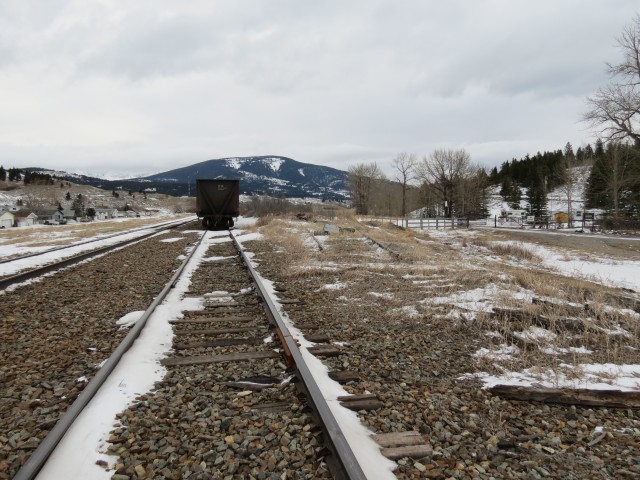
Ironically, some old coal cars are being stored next to the old Coleman Collieries site.
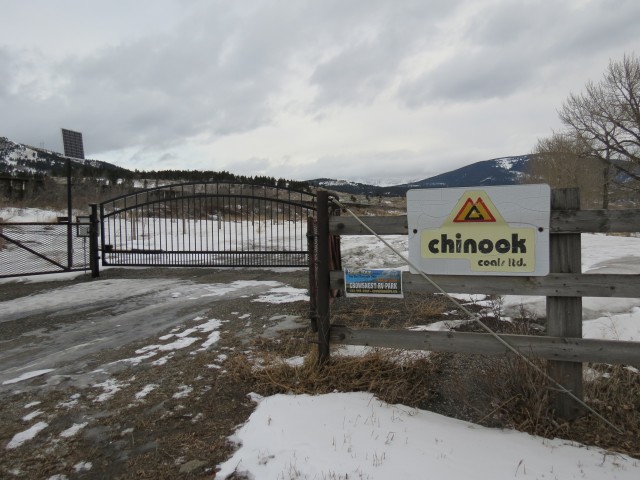
Chinook Coals was the last owner.
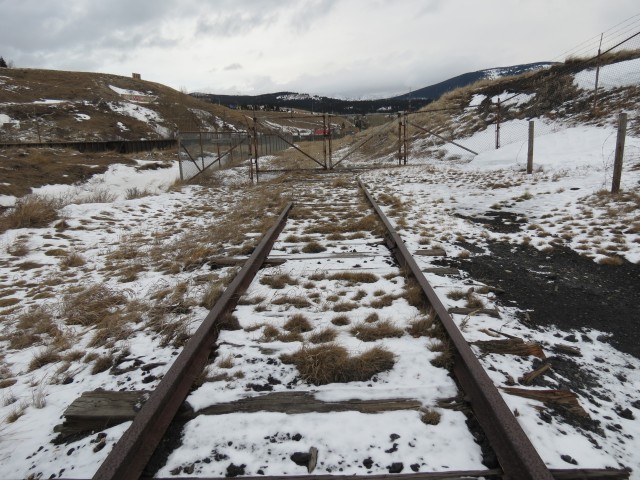
A disconnected siding leading into the plant.
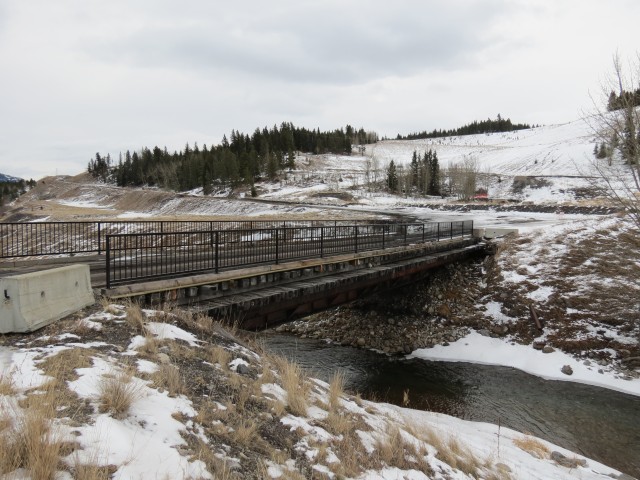
We make our way across the Crowsnest River and head up the old road to the left.
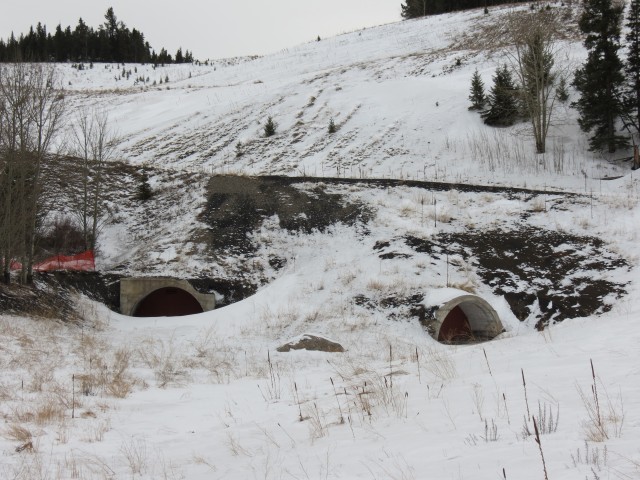
We pass the entrances to the International Mine.
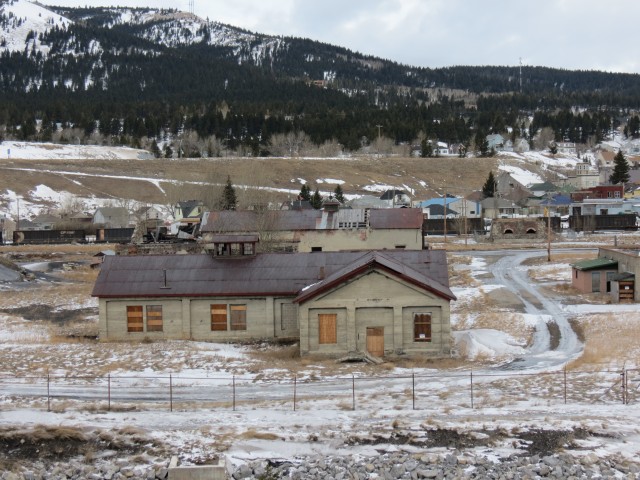
As we gain height we have a good view of some of the out buildings.
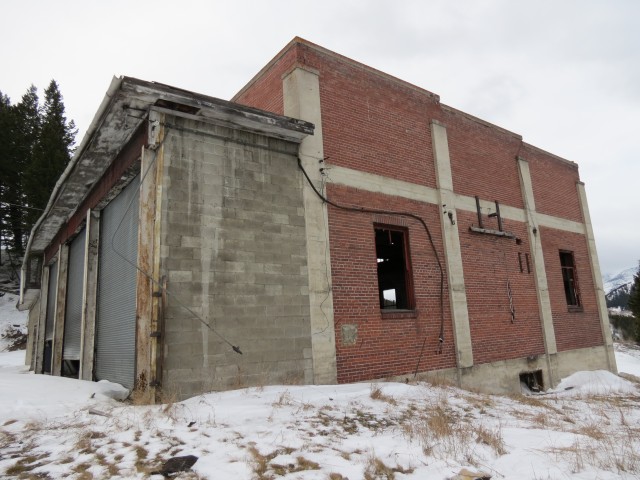
What is believed to be an old electrical substation.
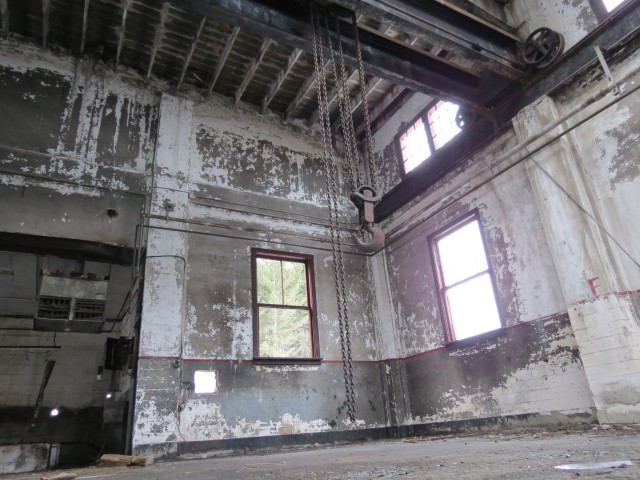
Inside the mostly empty building.
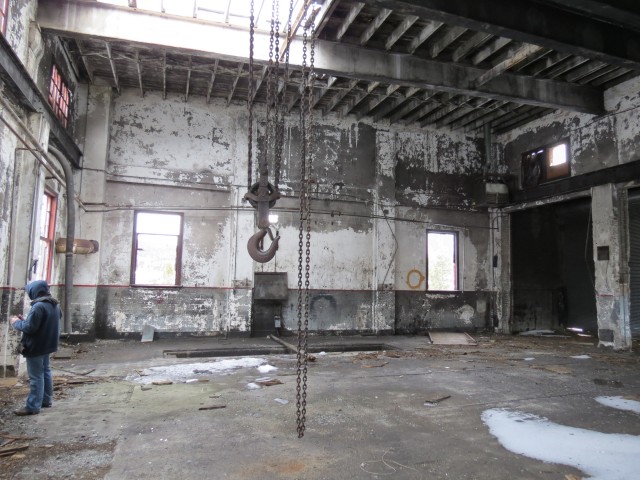
An old hook and hoist for offloading equipment.
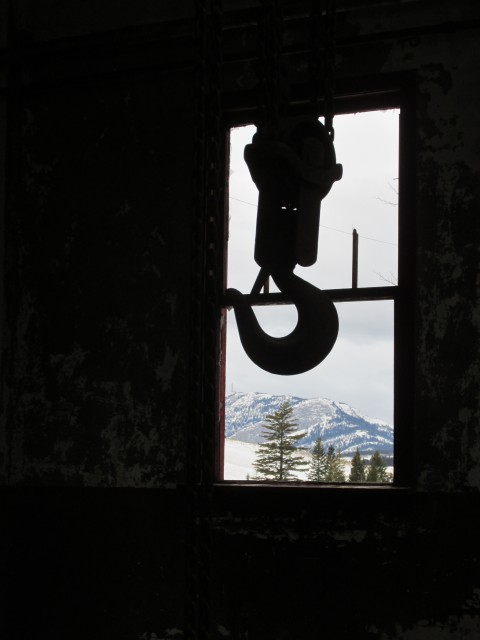
It was a dark moody day…
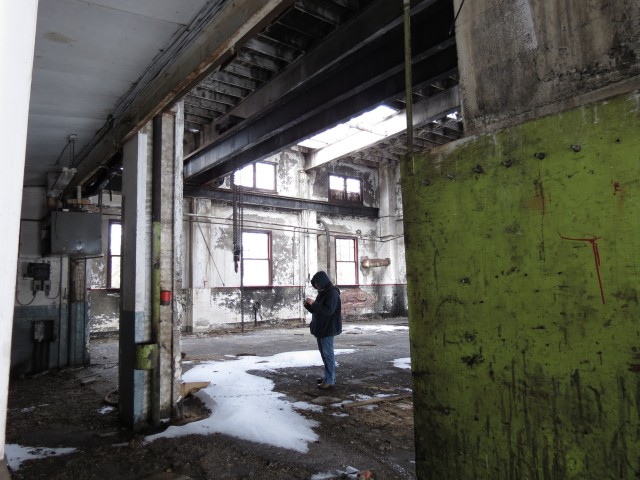
Everything was grey and gloomy…the building’s interior…the day outside…how we felt.
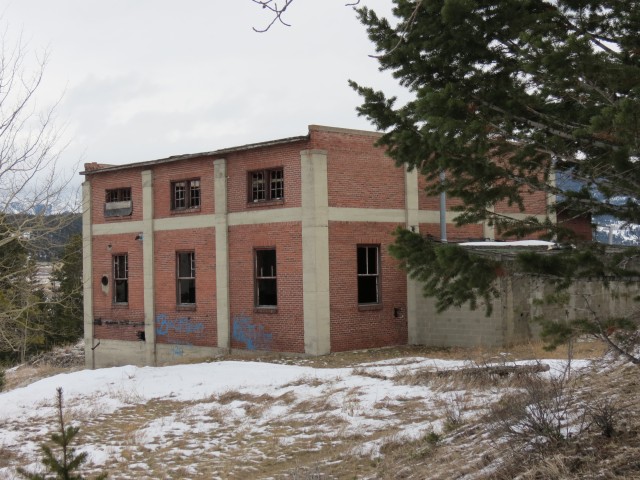
The structure sits about half way up a ridge.
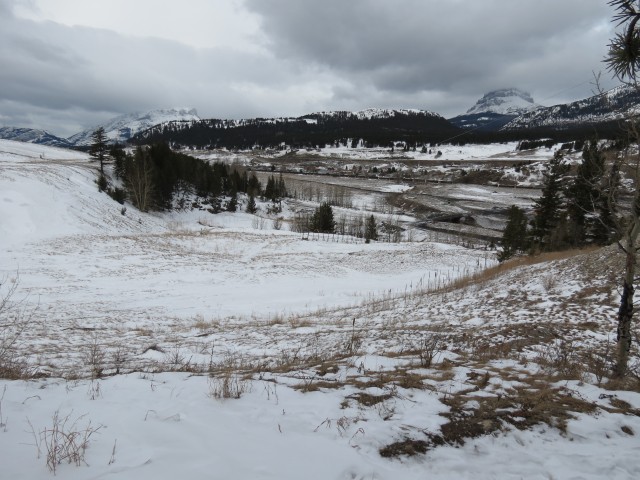
These slopes were used for coal storage.
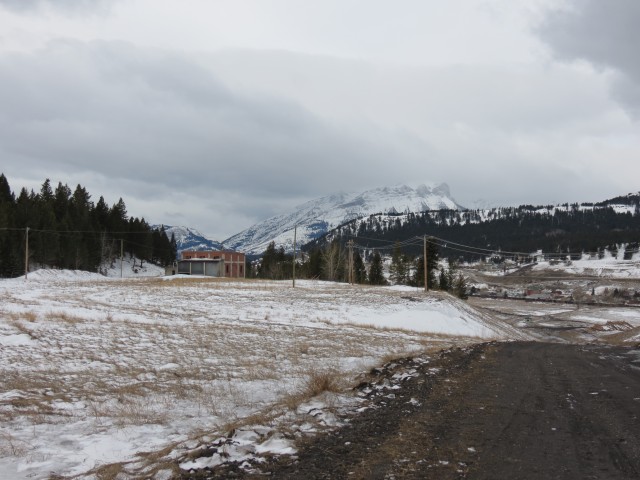
One last look before we head down.
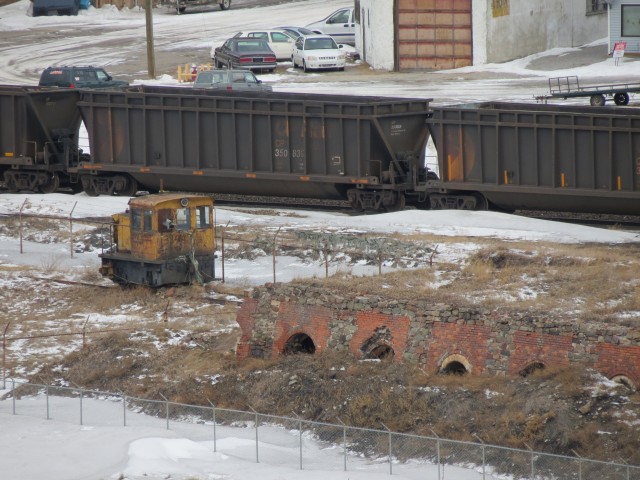
This little yellow locomotive was left behind when the plant closed. Note the coke ovens.
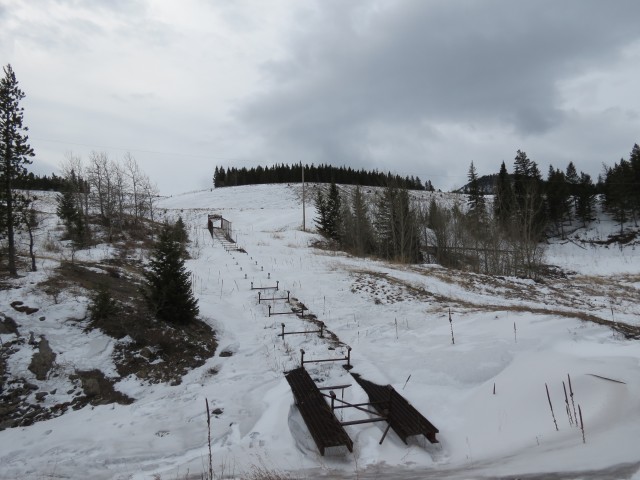
What appears to be an old conveyor system.
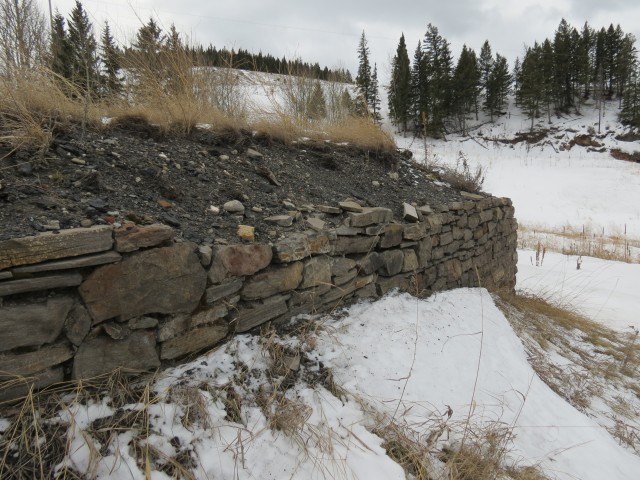
An expertly made rock wall.
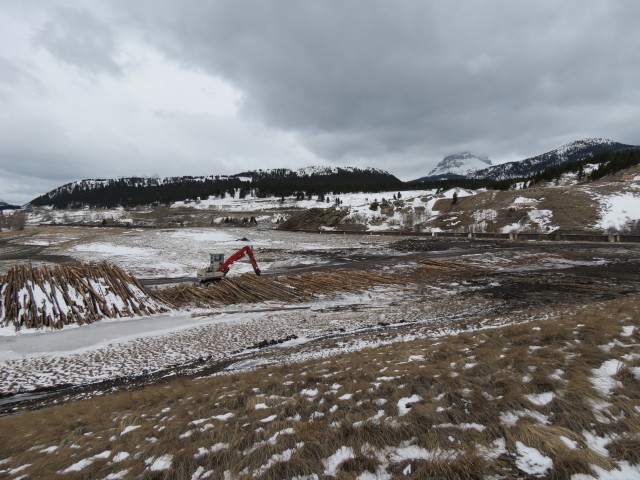
The huge blue loadout that was demolished recently stood at this spot.
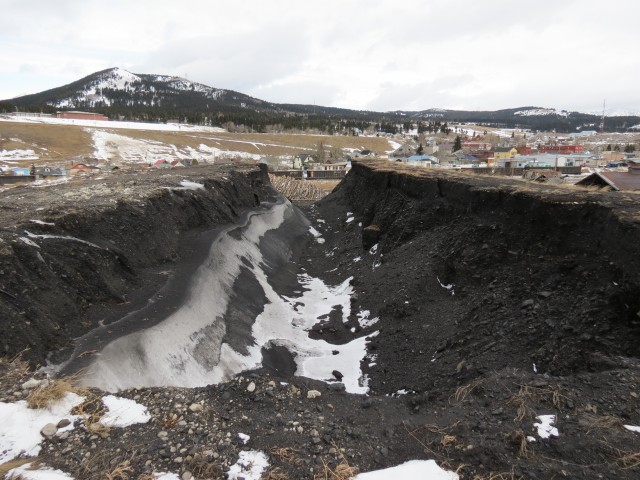
A coal slack pile – a large pipe or passageway was located where this pit is now.
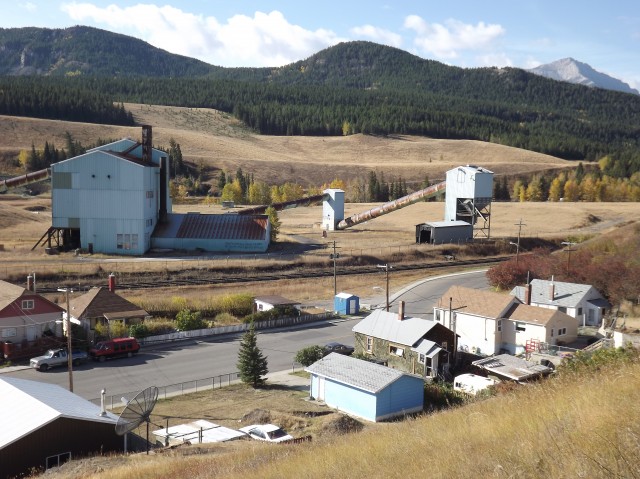
The big blue building that was torn down, seen in 2012.

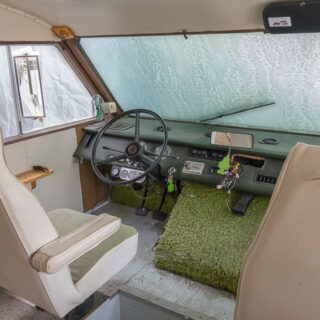
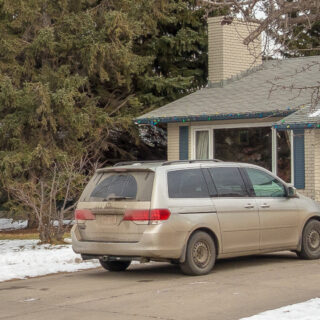
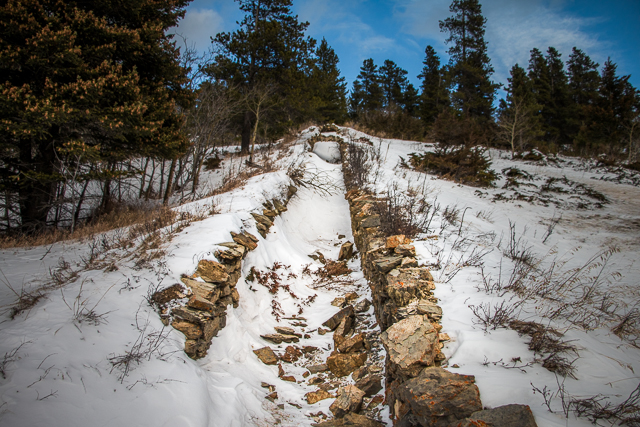
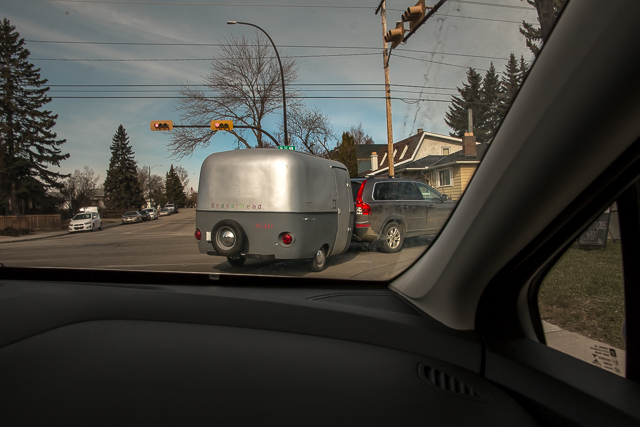
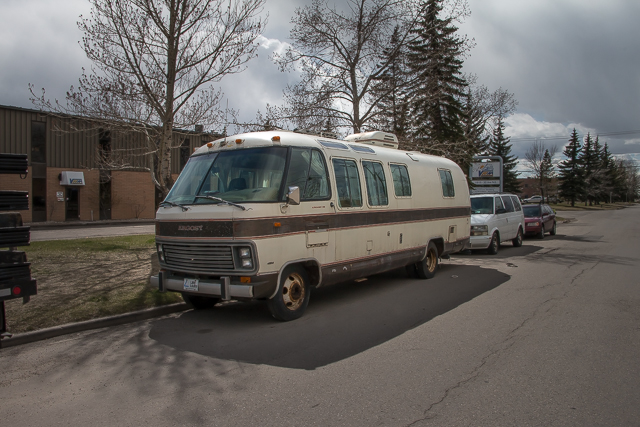
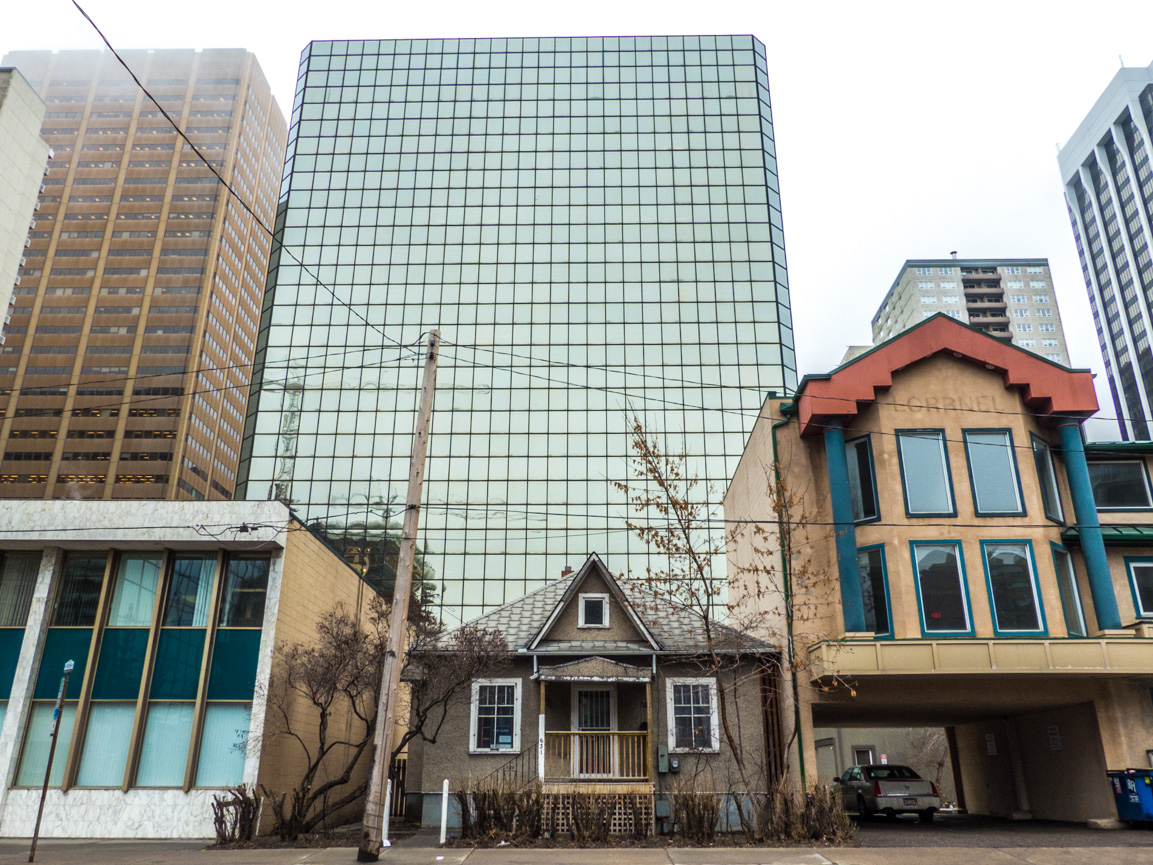
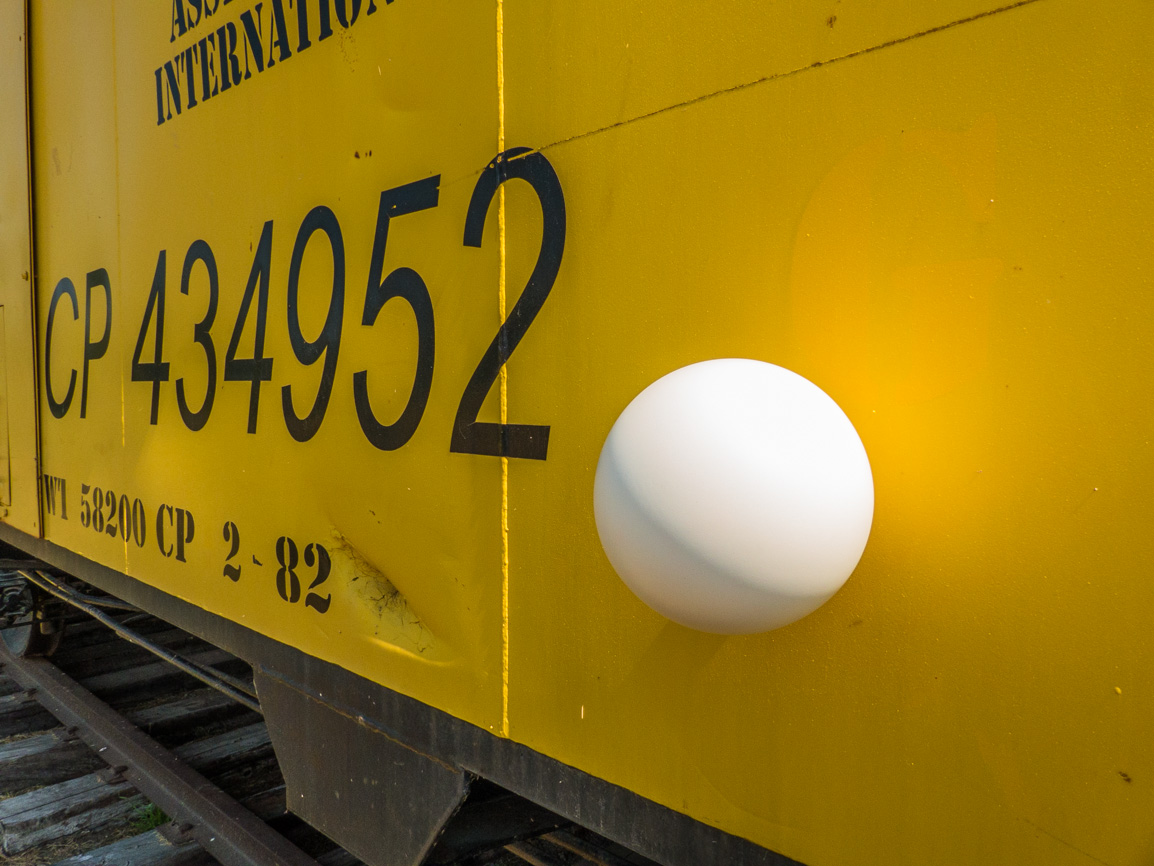
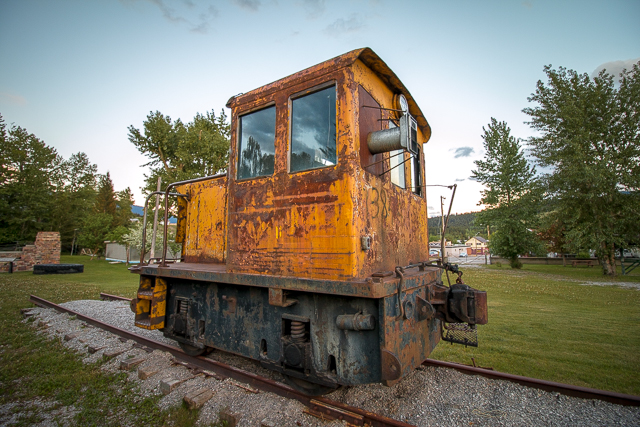
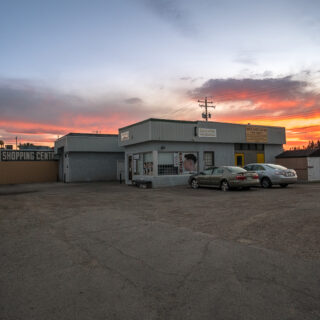
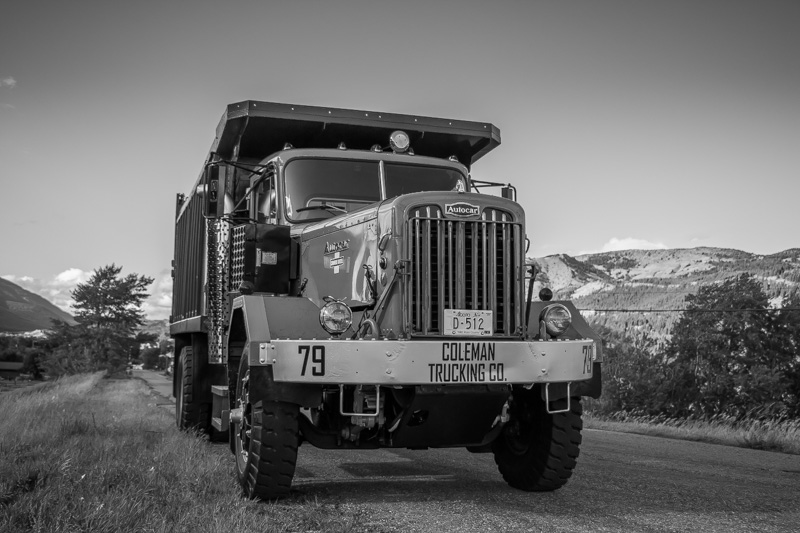
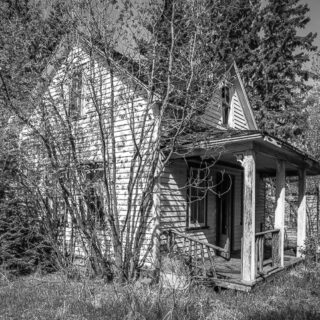
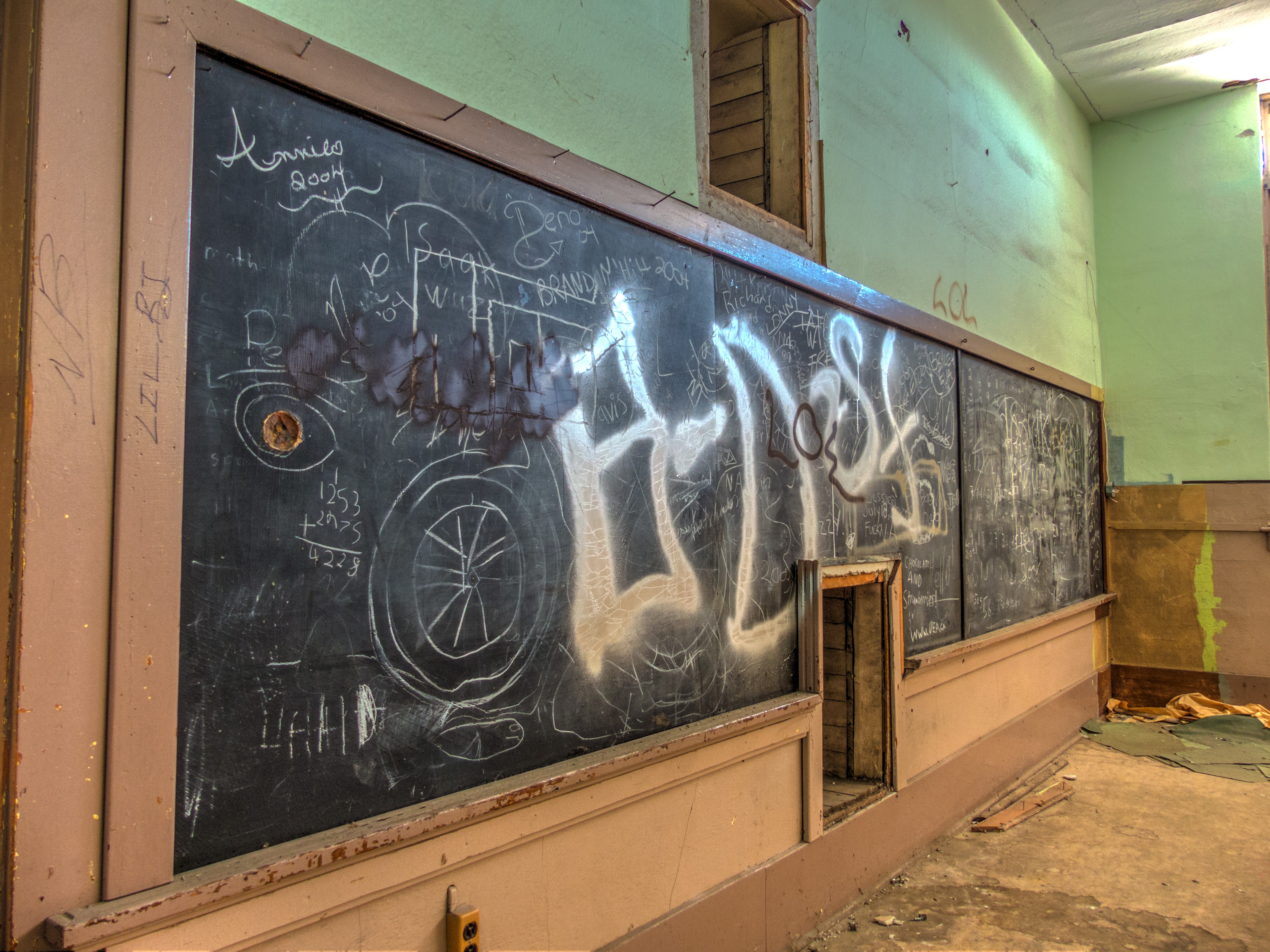







My wife and i cover every inch of that place years ago. Inside the big building up and down those convener belt tubes . The big building was straight out of some sci-fi horrer movie all the floors and staircases were steel grates it went up to 5 or 6 levels looking down you could see right to the ground. On some of the floors the grates would tetertoter when you stepped on one end scare the living poop out of you. If you know the pass you know the winds that come the place creeks groans slams metal against metal the whole structer moves back and fourth it was even worse inside the the convener belt tubes the winds started when we were going up the one that leads to the top of the big building we thought the thing was going to come apart with us in it. Inside the big building you could here animals scratching and scouring about never saw what they were and probably a good thing cause there were a lot of piegions tore to pieces all over the place There were so many cool and weird machines in there we totally forgot about time ended up leaving at the crack of dawn both of us covered head to toe in coal dust walking back to the car a couple of people already up gave us some strange looks we both looked like we were wearing blackface. I felt bad for who ever had to clean the washrooms at 7-11 in Coleman any thing i touched or brushed againsts was smeared in black i did my best to clean myself and the sink but it needed more then soapy water sorry 7-11 people I have to say my wife and i did a lot of exploring before it became so trendy and Coleman was one if not the best of them all. Thanks for waking up those old memories
Cool memories and thanks for sharing. It’s too bad it couldn’t become an attraction in the Pass, and not torn down and neglected as it was/is. We get it, it’s a money thing, totally understand. In a perfect world perhaps the outcome would have been better. Now we lament what could have been.
i remember hearing talk of a historical society trying to save it some time ago. B
But in the end greedy developers and the all mighty dollar win again
If only public opinion could be swayed so places like this could be saved. It takes love and money.
Thank you for documenting this and putting it on line. I’m wondering if you can provide any information to help me with a search. My great grandfather, William Antrobus moved to Coleman with his family around 1910-1915. They built a house near Coleman, with a very large vegetable and flower garden, and a small dairy with local milk delivery. My grandfather describes his walk home from the mine as being, “about 2 miles east of the tipple, and a long walk uphill, off the main road”. In another letter my grandfather says 2 miles from the colliery so not sure where exactly he was working, but I believe it was above ground. Also, Fred Antrobus, my great grandfather’s brother, operated a shoe shop “just across from the mine” in Coleman, and his wife Mary used to order things for people from the catalogues. Later my grandfather, another Fred Antrobus taught school briefly in Coleman. That would have been around 1920. Looking at the existing map of Coleman, I’m struggling to identify where the mine was or which school that might have been. I would be grateful for any help you could provide.
Karen, so nice to hear from you. There’s not much to work with here I’m afraid. There were several mines and associated tipples at the time in and around Coleman, so without knowing which one, it’d be hard to pinpoint a location for the house. And that’s assuming the distances and bearings were correct. In 1920 there was one school in West Coleman, where as other students were taught in rented facilities elsewhere in town, the location of which is not mentioned. Sorry not much help here.
Thanks Chris
My Grandfather Harry Houghton, was the brother of Alice Ann Antrobus (nee Houghton). He worked at the Clock Face colliery in St Helens in the early 1900’s. This mining connection presumably explains why William & Alice move to Coleman from St Helens.
Here’s hoping the person see this.
Good post Chris . I agree 100% with your opinion on the demolition
I was in Coleman in the summer, everything related to the old mine site seemed to be off limits so just explored the old crumbling downtown area… I guess I didn’t try hard enough to find ways around… *shrugs* Need some more pointers next time around…
On our visit the gated complex was wide open. Talking with some locals out walking their dogs it had been like this for a while. We were likely trespassing, but the guys working at the log sorting place paid us no mind.
Are any of those buildings left ?
For now anyway…
Chris,,Enjoyed the walk down memory lane. I worked at Coleman Collieries in 1973 . Underground, first as a timber packer (bringing logs to the mine face to support the ceiling) then operating a shuttle car carrying coal from the face to the conveyor belts.. There were miles of tunnels with newer tunnels mined below the upper played out shafts..
The area was always grey and industrial around the mine . As the only industry around the jobs were appreciated but nobody looked back fondly when the shift buses left after work. It is a shame no effort was made to preserve something considering the impact Coal has had on the Pass..And yet, the lack of attention has allowed the Crows Nest Pass to remain a hidden jewel
Glad we could help. It was a gritty industrial place, but indeed, coal drove the local economy and defined the Pass. It’s kind of sad this is not celebrated. Spot on, yes, the area is a hidden jewel.
My grandpa worked deep inside the International and he told me that if all the tunnels were connected end to end, they would stretch to Calgary. I don’t know if he was pulling my leg or if it’s even close to true.
I can’t confirm that, but it certainly sounds plausible. The mine was after all in production for many decades and so there would be a maze of tunnels inside the hill. In looking at the International lease, it extends back for many kilometres.